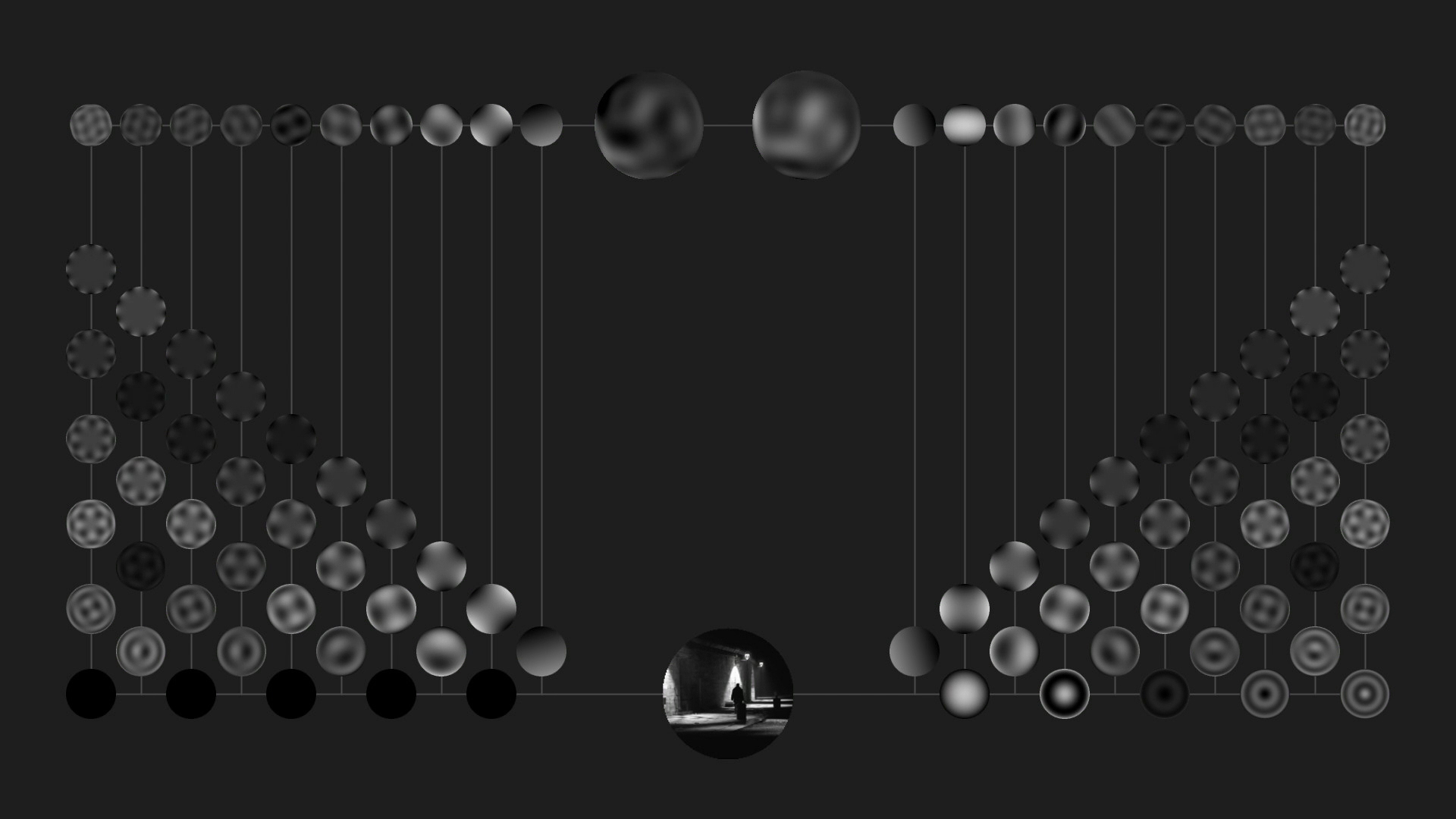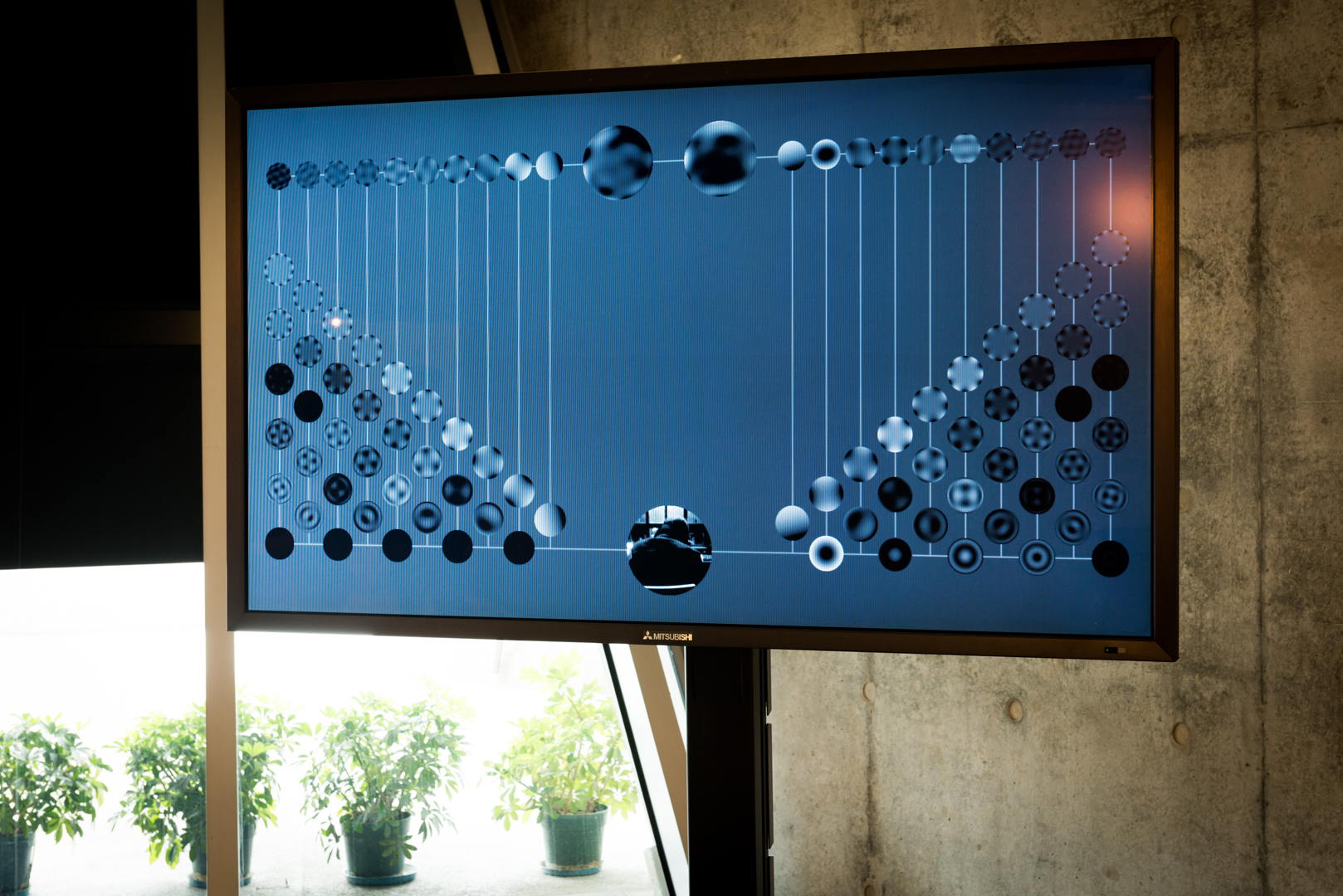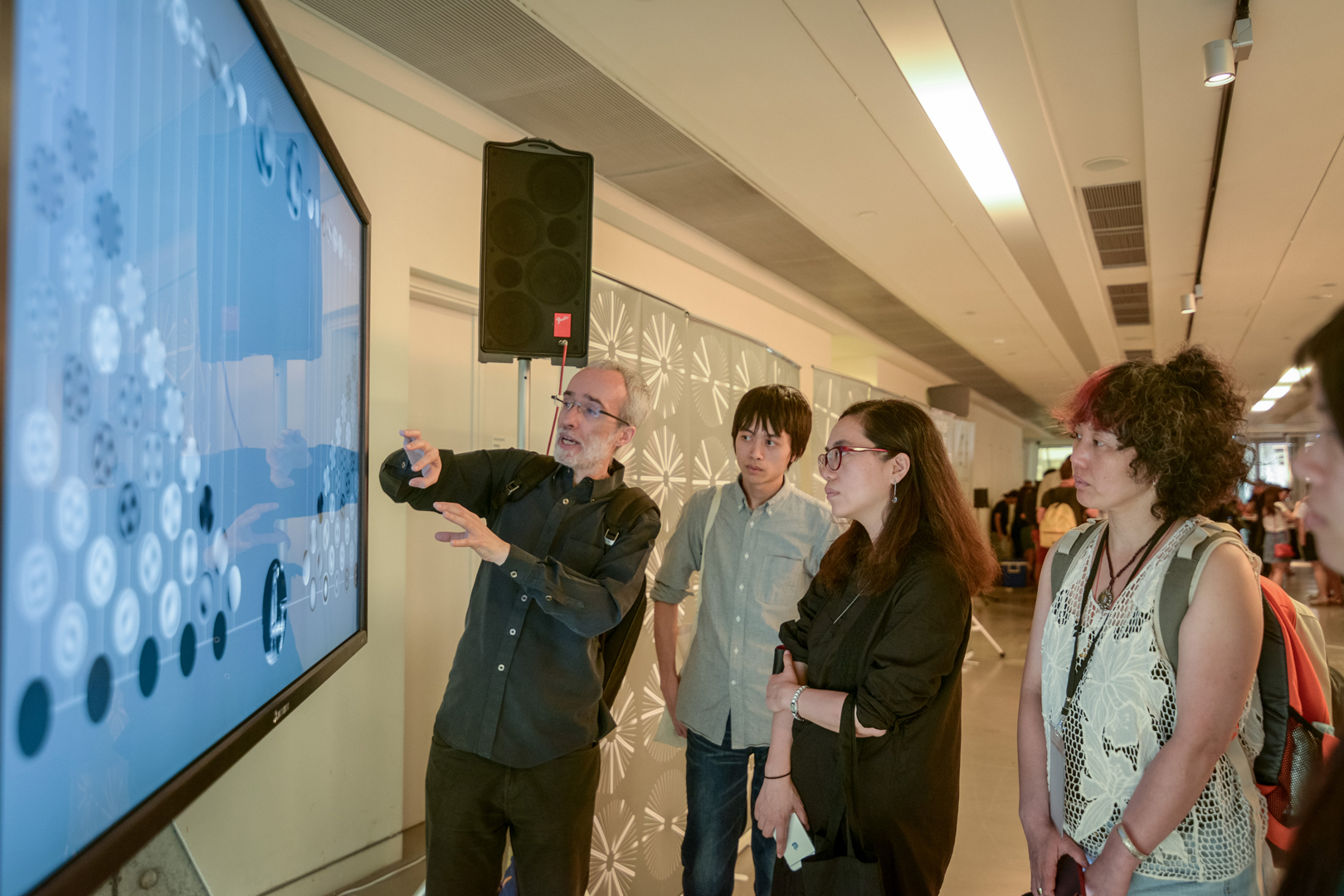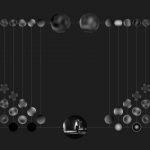“Z” by Hector Rodriguez
Title:
- Z
Artist(s) and People Involved:
Exhibiting Artist(s):
Symposium:
- ISEA2016: 22nd International Symposium on Electronic Art
-
More artworks from ISEA2016:


Venue(s):
Creation Year:
- 2014-2016
Medium:
- Single-channel video installation
Artist Statement:
Z is a moving image analysis system that produces abstract representations of video sequences using a system of predefined grayscale disks. Visually, the disks are characterized by two properties: their radial order (the number of concentric rings) and their frequency or repetition (the number of circular sections). Disks of the same order are shown on the same column and those of the same repetition on the same row. The visual content of each frame in the movie is represented by rotations and brightness changes in the various disks. The video is thus rendered as a sequence of changing configurations of circular shapes. This representation does not correspond to any pre-existing concepts used in film theory and criticism. For instance, it is not the case that one disk represents the amount of camera movement while another represents the camera position or angle. None of the information contained in any of the disks has a clear interpretation in terms of traditional cinematic categories. Instead, Z proposes an alternative paradigm for the perception, description and analysis of moving images.
An important inspiration for this project is Soviet filmmaker S. M. Eisenstein’s suggestion that cinematic images are akin to musical overtones. An image is for Eisenstein the total sum of many visual overtones. The interest of Eisenstein’s proposal lies in the suggestion that we ought to pay close attention to the subtle and varying micro-events of a moving image stream, but the notion of a visual overtone was not precisely defined and has not been adopted by cinema theorists. Z supplies a mathematical formalization of Eisenstein’s idea, enabling a precise decomposition of an image into local harmonics. For this purpose, Z employs a mathematical framework originally devised by physicist Frits Zernike to describe the aberrations of microscopes, telescopes and other optical systems. The circular shape of the disks evokes the images seen through (e.g.) a microscope. Just as the microscope grants perceptual access to what cannot be seen by the naked eye, so the disks in Z draw attention to the often unnoticed micro-events of a moving image.
Z explores the application of Zernike’s framework to the analysis and synthesis of moving image sequences. The overall visual design of the system constitutes a diagram of the various procedural steps in the computation of the Zernike moments of a moving image, self-reflexively exposing the computational process on which the system depends. The graphical composition expresses the idea of a circuit, starting with the source image displayed in the lower part and ending with its reconstruction in the upper part. This visual approach affirms the aesthetic value of process-based diagrammatic representation in the context of computational art.








